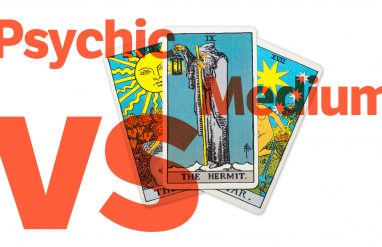A simile is a comparison between two things that uses the word like or as: Her smile is as bright as sunshine. A metaphor is a direct comparison between two things that does not use like or as: Her smile is sunshine. The word metaphor is more broad and can also refer to a variety of ways of comparing or connecting different things, including those that don’t use words at all.⚡ Quick summary
The difference between a metaphor and a simile is like the difference between precious metals and gems (both are valuable and useful, but one can take many more forms). Understanding this difference—and knowing how to use both—can be a jewel in the crown of your writing, making your descriptions and comparisons more colorful and engaging. See what we did here? That first sentence uses a simile, and the second uses a metaphor. But do you know what makes a simile a simile and what makes a metaphor a metaphor?
Similes and metaphors are two of the most common figures of speech—expressions that allow us to make comparisons, connections, and descriptions beyond literal ones. Join us as we dig into how they work, explain how to tell them apart, and give you a treasure trove of examples.
What is a simile?
A simile is a figure of speech in which two things are compared in a way that clearly indicates that a comparison is being made. This is typically done using the words like or as. The most basic form is X is like y, as in His temper is like a thunderstorm. But you can form similes in other ways, too: His temper is as furious as a thunderstorm or His temper is furious, much like a thunderstorm.
Similes are generally used to make descriptions more vivid. Saying “The stars twinkled” doesn’t spark the imagination nearly as much as “The stars twinkled like diamonds.” Similes allow descriptions to be more concrete or better engage the senses—which makes the descriptions stand out more. But the use of like or as clearly indicates that a comparison is being made.
Where does the word simile come from?
Simile comes from the Latin similis, meaning “similar.” A simile states that two things are similar (and explicitly signals that a comparison is being made by using like or as).
What are some examples of similes?
Similes are everywhere: in poems, songs, novels, news reports, everyday conversation, and any writing or speech using a creative comparison that involves the words like or as.
- There were rockets like a flight of scintillating birds singing with sweet voices. (J.R.R. Tolkien, The Fellowship of the Ring)
- You may kill me with your hatefulness, But still, like air, I’ll rise. (Maya Angelou, “Still I Rise”)
- The man moved with exquisite calm, like a leaf drifting on the surface of a pond, making its own way on gentle currents. (Colson Whitehead, The Underground Railroad)
- You are like a hurricane/There’s calm in your eye (Neil Young, “Hurricane”)
- Then she looks up at us with a scowl, like we’re keeping something from her, like we’re evil stepmothers keeping her rightful crown under lock and key. (Celeste Ng, “Girls, at Play”)
- Your love is like a rollercoaster (Ohio Players, “Love Rollercoaster”)
- So you have no frame of reference here, Donny. You’re like a child who wanders into the middle of a movie …. (Walter Sobchak, The Big Lebowski)
Learn more about how to use figuratively and literally accurately.
What is a metaphor?
Metaphor is a much broader term than simile. In the broadest sense, the word metaphor refers to a symbol that represents something else. So, for example, you could say something like “In the novel, the horse that keeps appearing and disappearing is a metaphor for death.” Many of what we call figures of speech are technically types of metaphors (even similes can be thought of as a type of metaphor).
In terms of writing and speech, a metaphor is the applying of a word or phrase to something that’s not literally related in order to suggest a resemblance.
Sometimes, this type of metaphor is basically a simile without the words like or as, as in His temper was a thunderstorm. Like similes, metaphors are used to draw vivid comparisons or create associations. But the effect can be even more powerful with metaphors because metaphors can be much more complex.
An extended metaphor is a metaphor in a literary work, such as a novel or poem, that isn’t just used in one line but is extended over multiple lines or throughout the work. Metaphors can also be subtle. In writing and other art forms, a metaphor might not be stated directly at all, but instead left to be interpreted by the reader or viewer (like the example of the horse above).
What are some examples of metaphors?
Metaphors are especially common in creative writing, but they also appear in other art forms and everyday speech.
- But that the dread of something after death, the undiscover’d country (William Shakespeare, Hamlet)
- “Hope” is the thing with feathers / That perches in the soul (Emily Dickinson, “ ‘Hope’ is the Thing with Feathers”)
- But my heart is a lonely hunter that hunts on a lonely hill. (William Sharp, “The Lonely Hunter”)
- Your clothes were curtains hanging on the window of what had been your flesh and now was glass. (Marge Piercy, “My Mother’s Body”)
- Life is your restaurant and I’m your maître d’. (Disney’s Aladdin, “Friend Like Me”)
- I got a bowling ball in my stomach/I got a desert in my mouth. (Tori Amos, “Crucify”)
- Love is a battlefield. (Pat Benetar, “Love Is a Battlefield”)
Metaphors can be found in all of the places that similes are, but a comparison doesn’t need to be stated with words to be a metaphor. For example, the late-night diner scene depicted in Edward Hopper’s famous painting Nighthawks is often interpreted as a metaphor for the loneliness and alienation of modern city life.
Similes and metaphors are commonly used in poetry. How well do you know these other poetry terms?
Where does the word metaphor come from?
The word metaphor comes from the Greek metaphorá, meaning “a transfer.” In essence, the use of metaphor involves the transfer of meaning from one thing to another.
How to use simile vs. metaphor
Remember, a simile compares two two similar things using like or as. A metaphor, on the other hand, makes the assertion that something is something else, as opposed to being like something else.
Because of this directness, you might want to use a metaphor when you want a description to be stronger or more forceful, whereas you might want to use a simile when you want it to be clear that you’re making a comparison. Still, both can be used in a broad range of situations and contexts.
Metaphor is also a broader term—many literary devices, creative descriptions, and symbols can be considered types of metaphors.
Examples of simile and metaphor used in a sentence:
- His metaphor made no sense to her—what did “life is a textbook” even mean?
- Clean as a whistle is a commonly used simile whose original, literal meaning isn’t entirely clear.
- Although the directness of a metaphor is more vivid, the fact that a simile contains an explicit comparison can make it easier for readers to follow.














